Closing the books on an extraordinary year filled with moments and metrics that no strategic communications consultant could have predicted, has found us, like many in the industry, reflecting on the year that was and gazing forward to the one ahead. Horizons can be hard to see when a new day is breaking — that’s why we tapped the leading voices at Communications Strategy Group (CSG®) for their high level insights into the changing strategic communications landscape.
Crises Reveal the Critical Nature of Communications for Brands, PR Firms and More
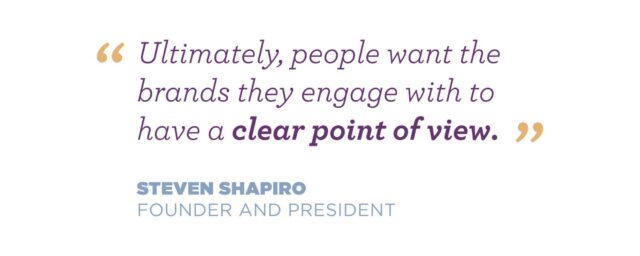
Prior to 2020, strategic communications was a well-known — and well understood — department in most large organizations. However, the myriad crises that confronted us in 2020 created an awakening to the critical nature of communications. Brands have strived, and continue to strive, to become trusted among customers and stakeholders. This year’s events magnified the role of the company and its strategic communications to employees, customers and stakeholders.
The past 15 years have seen tremendous developments in the ways in which we communicate with the audiences that matter most. Making a real impact across established and emerging channels calls all of us in the business of communicating to recognize and contextualize how the social climate and culture impacts the people we’re trying to reach — it’s the only way to regain their trust.
B2B Customers are Consumers, Too
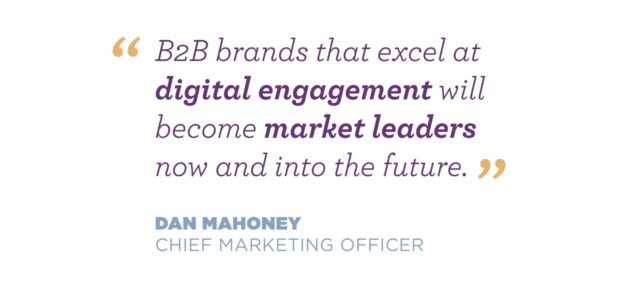
From the social distancing measures that have kept them from visiting stores in person to the technologies that have kept them connected to the people and things that matter, consumer behaviors have forever changed as a result of the ongoing COVID-19 pandemic. Fortunately for consumers, the B2C market was able to quickly adapt. Unfortunately, for business customers, the B2B market has been markedly less agile in its response.
The fact is, business customers are consumers, too. And their habits have changed in tandem in the pandemic, as well. Businesses that previously depended on in-person events, trade shows and conferences to generate sales were not prepared to suddenly meet the needs of customers who are now spending significantly more time online researching products and services before making a decision.
B2B brands that excel at digital engagement will become market leaders now and into the future. It’s an exciting time for brands that have already invested in their digital presence and engagement strategy, and it will be critically important for brands that are behind the times to catch up in order to stay competitive in the future. Challenger brands can lead the way with a strong web presence, smart SEO strategy and a keen understanding of business consumer behavior. A consultation with a strategic communications, PR and marketing agency can reveal opportunities to develop an integrated digital engagement strategy that keeps the sales pipeline filled during these turbulent times and into the future.
Reading is Fundamental
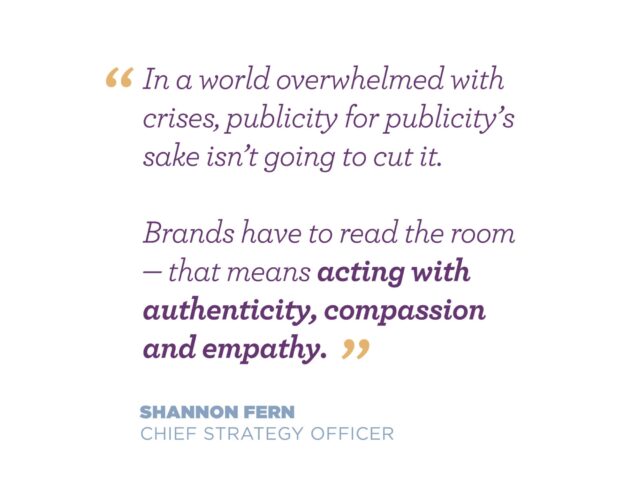
It’s undeniable that 2020 found us operating in a highly unusual media environment — the COVID-19 pandemic, an unusual and turbulent election season, and renewed movements for social justice all made crisis the watchword of the day for brands and PR agencies alike. Making an impact amid myriad cultural flashpoints isn’t impossible, but it does call for brands to take a step back before stepping into the spotlight.
In a world overwhelmed with crises, publicity for publicity’s sake will no longer cut it. Brands have to read the room — that means acting with authenticity, compassion and empathy. Reading the room involves understanding not only the external environment and the current events du jour, but also having an appreciation for where your audience is really at. The circumstances they face. They stress they’re under. And how your brand connects to their unique situation.
As we enter the new year, we can expect some boiling points will return to a simmer and media outlets will once again widen the scope of what they’re willing to cover. But a cultural bell has been rung that can’t be unrung. Brands are going to have to reexamine the way they do business, the way they navigate the media landscape — and the way they speak.
Take it from a Strategic Communications Consultant: Social Media and Social Expectations in 2020
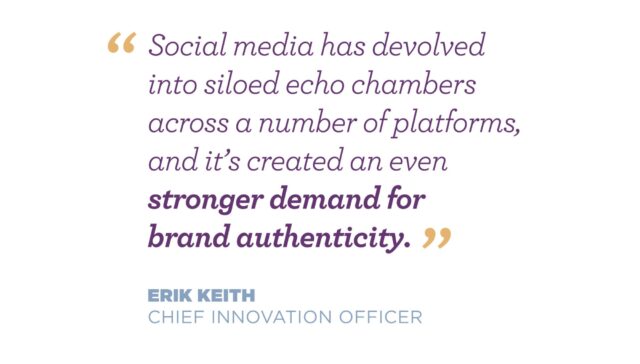
For a very long time, it was possible for brands to remain above the political fray, but 2020 ushered in a new era in corporate responsibility. Social media has devolved into a cesspool of misinformation and siloed echo chambers across disparate platforms, and it’s created an even stronger demand for brand authenticity. Successful brands take the time to understand the values of their stakeholders, understand their own corporate values, and capitalize on shared values with their target audiences. That doesn’t necessarily mean staking out a political position, but it does involve figuring out the parts of your brand identity that authentically align with your customers and owning it.
5 Social Media Trends to Watch in 2021
- Misinformation Dissemination: Social platforms will continue to grapple with the spread of misinformation. The biggest culprits? Private groups, peer-to-peer messaging and live video streams — they’re too hard to monitor.
- The Value of Video: Demand for video content surged with the rise of the COVID-19 pandemic and it will continue to dominate the social media landscape. Social media platforms recognize this and have updated their content delivery algorithms to prioritize this format.
- Paid > Organic: The impact of organic reach will continue its decline for businesses in 2021. To break through the noise, it’s all about what you promote, but also having the budget to ensure it reaches its intended audience.
- Influencing Influencers: The entire influencer marketing industry is headed for a regulatory revamp — expect to see the FTC make a few examples out of bad actors who have used influencers to mislead consumers without using proper disclosures.
- Bigger Isn’t Better: And speaking of influencers, we’re already seeing much larger focus on micro- and nano-influencers who often deliver better ROI than their macro counterparts.
The Connection Between Connections and Content Marketing
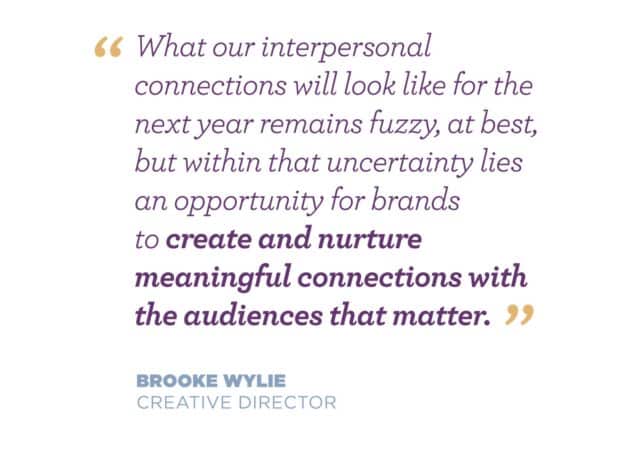
If there is a silver lining to this tumultuous year, it’s that 2020 reaffirmed, for most of us at least, the intrinsic value of the connections we share with the people who matter. With a long road back to something approximating a new normal, the exact nature of our interpersonal communications for the next year remains fuzzy, at best, but within that uncertainty lies an opportunity for brands to create and nurture meaningful connections with the audiences that matter.
Thoughtful and intentional content marketing can support that endeavor by meeting your target audience where they are with distinct content that encourages a deeper conversation. Now more than ever, brands and marketing agencies need to focus on delivering impactful, purposeful creative services that can recreate the value of a personal connection.
We love talking about strategic communications almost as much as we love solving business problems. Check out our blog for more insights from the intellectuals and influencers who call CSG home.


